
By Alex Navarro, GameSpot
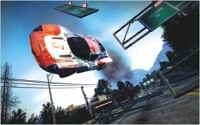 Is there any developer buzz term more meaningless these days than "open-world gameplay"? Let's face it, it's kind of been done to death at this point, so you have to look on with a bit of skepticism when a developer touts the concept as the next big thing for its franchise. It's understandable, then, if Burnout Paradise's concept freaks you out a little bit. Burnout has, by tradition, been a fairly structured arcade racing game up to this point, and one would have to wonder exactly how well an open environment would serve the series' crash-happy gameplay methodology. Evidently, the answer is quite well.
Is there any developer buzz term more meaningless these days than "open-world gameplay"? Let's face it, it's kind of been done to death at this point, so you have to look on with a bit of skepticism when a developer touts the concept as the next big thing for its franchise. It's understandable, then, if Burnout Paradise's concept freaks you out a little bit. Burnout has, by tradition, been a fairly structured arcade racing game up to this point, and one would have to wonder exactly how well an open environment would serve the series' crash-happy gameplay methodology. Evidently, the answer is quite well.
The star of the show is Paradise City itself. Coming complete with the titular Guns 'N Roses song. The simple act of driving aimlessly around the city constantly presents new roads, shortcuts, and destructible objects for you to experience and, often, destroy.
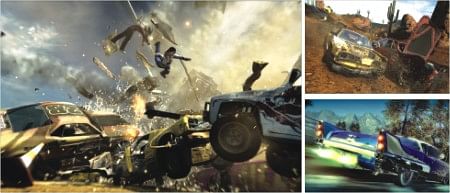
The focus of Burnout Paradise isn't on doing specific events so much as it is about doing whatever you feel like. If you fail a race, odds are that there are roughly a dozen starting points for other races near the finish line of that previous race, and unless you've done them all, you can just hit up any one of them to get another notch on your license.
It's a strange design to get used to initially, but once you do, it becomes incredibly rewarding. You can spend hours at a time just dawdling around the city and still make forward progress within the game. Don't feel like racing? Just go break through shortcut gates or bust up billboards, which are tallied up as you break each one. Or, track down one of the cars you unlocked on the road and take it down to add it to your collection. Or, you can opt to pick a road and attempt to "own" it. There are two types of events associated with each of the major roads in the game. Time trials are as you'd expect--you simply start at one end of the road and start driving down it, attempting to get the fastest time you can. Secondly, there are showtime events, which are the game's effective replacement for the crash mode found in previous installments of the series. Whereas crash mode was sort of like a puzzle mode in the way it made you create elaborate car crashes out of painstakingly built traffic designs, showtime is the polar opposite. These are elaborate car crashes born from little more than a bunch of nearby cars and your ability to control what is, in essence, a sentient car wreck.
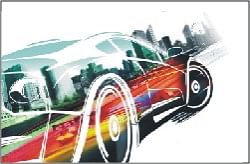 A number of other elements from previous Burnouts are also missing or altered here. The lack of aftertouch (the mechanic that let you steer your wreck into opponents during races and take them out) is a real bummer, as it makes wrecking during races a pure nuisance rather than an opportunity for more destructive glee. Traffic checking is absent as well, though it isn't sorely missed. The racing artificial intelligence has seen a bit of tweaking here and there. You still get the sense of rubber banding that the series has always employed, but as the game goes on and the racers get tougher, your opponents become more aggressive and don't just tank right before the finish line. By and large, the game is actually a bit easier than the last couple of Burnout games, but the challenge toward the later stages of the game definitely ramps up significantly.
A number of other elements from previous Burnouts are also missing or altered here. The lack of aftertouch (the mechanic that let you steer your wreck into opponents during races and take them out) is a real bummer, as it makes wrecking during races a pure nuisance rather than an opportunity for more destructive glee. Traffic checking is absent as well, though it isn't sorely missed. The racing artificial intelligence has seen a bit of tweaking here and there. You still get the sense of rubber banding that the series has always employed, but as the game goes on and the racers get tougher, your opponents become more aggressive and don't just tank right before the finish line. By and large, the game is actually a bit easier than the last couple of Burnout games, but the challenge toward the later stages of the game definitely ramps up significantly.
The racing itself is as exciting as it's ever been. Standard races are intense and thrilling, road rage events are full of wreckful delights, stunt runs have you jumping, barrel rolling, and flat spinning all over the place, marked man races are tense fights to the finish line as multiple enemy cars bop you around trying to wreck you beyond repair, and burning routes have you taking on challenging time trials to earn new cars.
Paradise's visual presentation is precisely the kind of top-notch work you've come to expect from the series. Once again, the game sets a standard for how a sense of speed should feel in an arcade racer. This game is lightning fast, and the frame rate in both the Xbox 360 and PlayStation 3 versions of the game holds up regardless of the chaos onscreen. The car crashes in this game are absolutely fantastic, thanks to some dynamite particle effects and camera work in each and every mangled wreck. Cars deform to wonderful effect, scrunching up like an accordion in head-on collisions and bending and twisting nicely in other situations.
It's also worth noting that Burnout Paradise is a game that commands an HD display, and not just for full graphical effect. On the standard-definition TVs we tried, we found the minimap to be borderline useless unless we squinted like crazy. On an HD set, the minimap is detailed and blown up enough to rely on, but when playing in standard definition, it simply became a hassle to use.
It's entirely possible that some people might not enjoy Burnout Paradise's significant shift in direction, specifically those who simply wanted another incremental Burnout sequel. Indeed, Paradise is anything but incremental, and while it might prove a polarizing experience for some, most will likely appreciate what a radical overhaul this game really is.
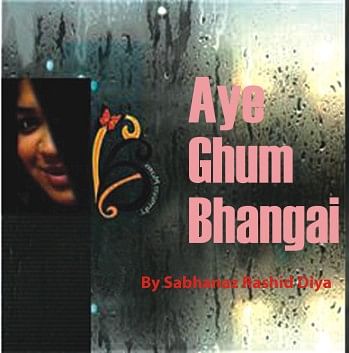
Armeen Musa is not a new face at the underground circuit. With two bands underlining her name and a single in the very popular mixed album Jhalmuri, as well as her hit number, the remake of Radha Raman's 'Bhromor Koio Giya'; AM has managed to create a niche for her music over the years. Her debut solo release, 'Aye Ghum Bhangai' from G-Series, is an easy listening 12-track treat for the avid listeners, 8 written and 11 tuned by the singer herself.
A deeply personal album compiling her musical endeavours from early years at school till now, 'Aye Ghum Bhangai' is a walk through her life and mind. 'Pakhi', a composition from her days as the blue haired, head banging, restless fifteen-years old, is a soulful blend of acoustic and electric guitars with soft drumming done by her band, The Grasshoppers. Followed by 'A Minor', mixed by Buno from Bangla and Adil from The Grasshopper, carries a funk, electronic ambience that beautifully balances its flow of words, written by Farhan Sajjad. The title track opens with catchy guitar strumming, eventually throwing into a set of verses complimented by the humming of drums. One of my personal favourites, owing to Farhan Sajjad's lyrical brilliance, 'Aye Ghum Bhangai' is a simple soulful number that demands and deserves fast paced popularity.
Contrary to most solo albums, AM's debut compilation comprise of a cover of Sachin Deb Burman's 'Ghum Bhulechi'. Although much doubts and anticipation were cast over its perfection, 'Ghum' is a poignant number, adding to the emotional awakening that characterizes this album. The ninth track of the collection, 'Na Ki Aar' incorporates a very different set of beats (done by Ornob). Another personal favourite, the song is the harmonious intermingling of a haunted state of mind contrasting to a lover's romantic pleadings.
'Jaa Urre Jaa' is a track featuring Mercury Award winning jazz pianist from England, Zoe Rahman and her brother Idris Rahman on the clarinet. Arranged by Buno with orchestral elements, the number embodies a beautiful solo by Idris and very traditional Bengali percussions. The most heart-rending and delicate song, 'Ei Shondhaye' is dedicated to AM's late stepfather, Dr. Anis Waiz. Slow guitar strumming (by Saif Quadir) aching to a drift of emotions flowing to her voice; this number speaks of accepting one's loss of someone precious, and realising pain cannot be healed, but is rather resided with forever.
Although I personally feel the album carries a single set of sounds with few noticeable variations, it builds up to one's emotions and weakens the listener in an interesting way. Being an intimate production of AM's own dwellings dedicated to her mother Dr Nashid Kamal and her sister Aashna Musa, the album is something you can hum along to at the darkest hours of night. As mentioned in the inscription of the cover, 'Aye Ghum Bhangai' is a self-awakening journey towards embracing one's truest potentials outside the norms of life.

Actual space technology has been making cars haul ass way faster for years now, including a solar car that broke speed records using parts taken directly from the Hubble Space Telescope. But that's nothing compared to what's on the way, including muscle cars that use heat-resistant pistons. Click through for details.
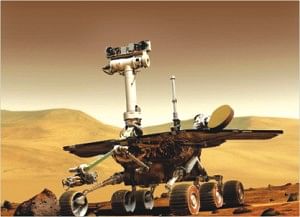 Nuna, a Dutch solar car, finished first in the 2001 World Solar Challenge, reaching a record-breaking top speed of 100 KPH and crossing from Darwin to Adelaide in a record-breaking 32 hours and 39 minutes. The car included dual junction and triple junction gallium-arsenide solar cells, which the European Space Agency had developed for its SMART-1 mission to the Moon. The car also had Maximum Power Point Trackers, which balance the power output between the battery and the solar cells, and which the ESA included on its Rosetta space probe. And the Hubble Space Telescope's contribution was two solar strips from its large solar array, salvaged by an astronaut in 1993. Here's a video. Let's not mock the wacky Dutch accents:
Nuna, a Dutch solar car, finished first in the 2001 World Solar Challenge, reaching a record-breaking top speed of 100 KPH and crossing from Darwin to Adelaide in a record-breaking 32 hours and 39 minutes. The car included dual junction and triple junction gallium-arsenide solar cells, which the European Space Agency had developed for its SMART-1 mission to the Moon. The car also had Maximum Power Point Trackers, which balance the power output between the battery and the solar cells, and which the ESA included on its Rosetta space probe. And the Hubble Space Telescope's contribution was two solar strips from its large solar array, salvaged by an astronaut in 1993. Here's a video. Let's not mock the wacky Dutch accents:
And Nuna's successor, Nuna II, uses improved ESA solar cells that harvest 20 percent more power. But it's not just solar cars that are benefiting from space technology. The Pescarolo-Judd C 60 prototype racing car uses composite materials developed for space flight to reduce its weight by 38 kg, giving it better heat protection while boosting its speed. And this is just the beginning of the ways space tech is being used in super-fast cars, or will soon be. A special kind of carbon fiber known as carbon-carbon, developed for missile nosecones, is already used to create car brakes that can withstand temperatures of up to 3000 F. But soon, NASA says, it'll be used to create higher performance pistons and connecting rods that could allow engines to go way faster without overheating.
And when you're taking sharp turns at 150 mph, you'll soon be in less danger of rolling over and ending up looking like an accordion. The Jet Propulsion Laboratory's Variable Dynamics Testing (VDT) vehicle will use a computer algorithm to alter several factors in rollovers, including the "understeer coefficient," load-transfer distribution and frequency and damping of the "vehicle roll mode."
Not to mention the fact that NASA sponsored a contest to develop a "Personal Air Vehicle," aka "flying car."
Meanwhile, the Mars Spirit Rover's AutoNav system lets it navigate the Martian terrain unaided, and could help to lead to the driverless cars that GM and other carmakers say we'll have within a decade. Actual race cars pack a lot of technology from the space program. For example, NASCAR drivers used to suffer third-degree burns on their feet, when the metal floorboards of their cockpits reached 330 F from the overheating engines... until 1996, when NASCAR and the Kennedy Space Center experimented with installing the heat shields from the Space Shuttle in its cars. Similarly, the cooling flame-retardant suits NASCAR drivers wear come from the Advance Crew Escape Suits (ACES) worn by Shuttle crews.
And then there are some uses of NASA technology that improve cars in less turbo-charging ways. Like this child car seat, which uses NASA's "systems integration expertise" to creating a better environment for the kiddies, including an entertainment system, video monitoring and a biotelemetry tracking system. Basically, it's like putting your kid inside a Teletubbie. And then there's this car wax, which claims to use NASA technology to ensure you'll never have to wax your car again. It looks like NASA is pretty desperate to find some valuable uses of its technology before its budget gets sliced down to nothing.

The Vanity Fair photo debacle may have everyone whispering about her, but fifteen-year-old Miley Cyrus, star of Disney's hottest new show 'Hannah Montana' is no stranger to fame.
Born Destiny Hope Cyrus to parents Leticia "Tish" (nee Finley) and country singer Billy Ray Cyrus, Miley, so called because she's always smiling (Smiley=Miley) became interested in acting at age nine when the family briefly lived in Toronto, Ontario, Canada. Her first acting role was as a guest star on her father's television series Doc, in which she played a girl named Kylie. In 2003, she played "Young Ruthie" in Tim Burton's Big Fish and was credited as Destiny Cyrus. She was also featured in Rhonda Vincent's music video for "If Heartaches Have Wings", and appeared on Colgate Country Showdown with her father, who was hosting the program.
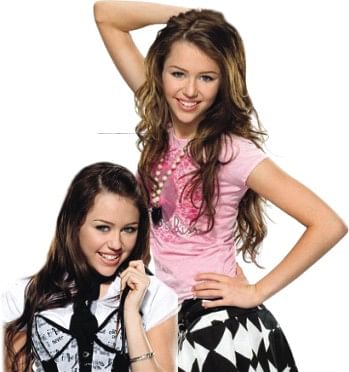
Cyrus was twelve years old when she originally auditioned for Disney for the lead role of Miley Stewart/Hannah Montana, as well as the show's "best friend" roles, but Disney Channel executives judged her to be too small. Cyrus was persistent in her desire to be part of Hannah Montana, however, so Disney called her back for further auditions.
Cyrus currently stars in Hannah Montana as the lead character Miley Stewart, whose alter ego is the pop music sensation Hannah Montana. Cyrus also performs in character as Hannah Montana for albums and concerts. Cyrus also appeared in the Disney Channel Hannah Montana promotion, "Hannah Montana's Backstage Secrets", in which she portrays Hannah Montana in a fictional interview set in the show's canon.
Walt Disney Records released Cyrus's first album, Hannah Montana, on October 24, 2006. The soundtrack included eight of the songs that Cyrus performed as Hannah Montana. Cyrus also signed a four-album major record deal with Hollywood Records for her own albums. The album was later re-released twice - a Holiday Edition featuring Cyrus's cover of "Rockin' around the Christmas Tree" and a Special Edition featuring "Nobody's Perfect". Cyrus also opened for The Cheetah Girls in 2006, performing on 20 dates of their 39-city tour.
On June 26, 2007, exactly eight months after the release of the first soundtrack, Cyrus released a double album, Hannah Montana 2: Meet Miley Cyrus. The first disc served as the second Hannah Montana soundtrack, while the second disc was Cyrus's debut album as herself. She wrote eight of the ten songs, credited by her birth name Destiny Hope Cyrus.
This teen queen is also rich in terms of merchandise. Cyrus became a spokesperson for Daisy Rock Guitars in 2004, when she was presented with her first Daisy Rock guitar - the Stardust Series Acoustic Electric Pink Sparkle. It was given to her by her parents from her father's Country Music Television fan meet-and-greet when she was twelve years old.
Disney released a Hannah Montana clothing collection in late summer 2007. Cyrus helped to design some of the pieces from the collection. "It's not a costume. A tween girl isn't doing dress-up, they want to look like they could be Hannah Montana's friend. This is a fashion line."
In April 2008, Cyrus announced plans to write a book about her life and career. The Disney Book Group bought the rights to the book for a reported 7 figures to be published by their imprint Disney-Hyperion Books for a scheduled release spring 2009. An initial printing run of one million copies is planned.
Whether she's playing a perky teenager with a glamorous secret, or belting out her famous tunes, or even churning out merchandise by the hundreds, Miley is definitely all that and more.
Source: Wikipedia
